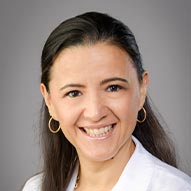Dallas
214-456-8000
Fax: 214-456-8005
Plano
469-497-2505
F: 469-497-2511
Park Cities
469-488-7000
Fax: 469-488-7001
Prosper
469-303-5000
Fax: 214-867-9511
Changing what children eat and how they exercise can reverse non-alcoholic fatty liver disease (NAFLD).
214-456-8000
Fax: 214-456-8005
469-497-2505
F: 469-497-2511
469-488-7000
Fax: 469-488-7001
469-303-5000
Fax: 214-867-9511
Non-Alcoholic Fatty Liver Disease (NAFLD) is the most common cause of chronic liver disease in children the United States, affecting millions. It is a condition in which fat builds up in the liver, and – if untreated – it can lead to serious liver problems like cirrhosis (scarring of the liver) and cancer during adulthood.
Over time, the extra fat can cause inflammation and scarring of the liver. When that happens, the disease becomes known as non-alcoholic steatohepatitis (NASH). The exact cause of NAFLD and NASH is unknown.
There are several tests to diagnose NAFLD and NASH in children. A doctor will go over your child's medical history and perform a physical exam. Doctors usually discover fatty liver disease through abnormal results in routine blood tests or by discovering an enlarged liver during routine examination. Your healthcare provider may also perform one or more of the following tests:
Not every child needs all these tests. Your physician will discuss with you exactly what the next steps are.
There is no medication for NAFLD, but healthy lifestyle choices can stop the disease and even reverse it.
At Children's Health, helping children overcome NAFLD starts with:
Children can stop or reverse NAFLD by eating healthier and exercising more. Children’s Health has special expertise in finding ways to help kids make these lifestyle changes long-term.
For example, Children’s Health dietitians know how to teach your child how to crave less sugar and choose healthier foods. We can also teach your child which foods will give them the best fuel to succeed at school.
Together, we’ll come up with a plan that involves fewer calories, less sugar and less fat – and plenty of physical activity.








Before treatment begins, we start with a quick blood test to look for high levels of an enzyme called alanine aminotransferase (ALT). This test can reveal whether a child’s liver has been damaged. Children might need additional tests to look for extra liver fat and to rule out other conditions.
If a child needs a liver biopsy, we offer a type of biopsy that uses no incisions. This technique, called endoscopic ultrasound-guided biopsy, is easier on kids and helps them recover faster.
During the biopsy, your child’s doctor will get a small sample of liver tissue to examine. This biopsy takes less than an hour, and your child won’t be in pain because they’ll be under anesthesia the whole time.
From there, gastrointestinal specialists, dietitians and a psychologist will work together to create a personalized treatment plan that helps your child change their lifestyle, lose weight and reduce liver fat. We see most children for follow-up visits every three or four months, to check their progress and help them stay on track. These visits can continue for a year or longer, depending on how severe each child’s NAFLD is.
For more information on NAFLD, refer to the following resources: